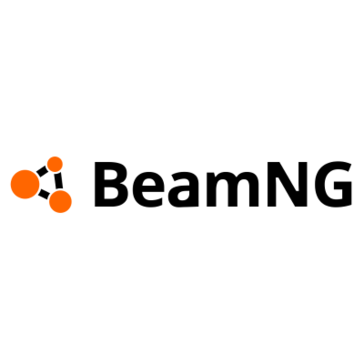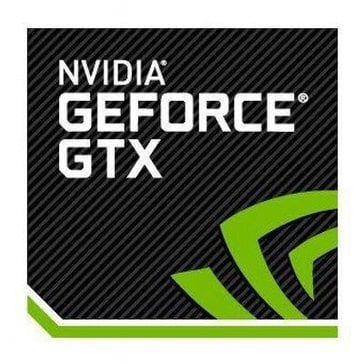Description

BeamNG

Box2D
Comprehensive Overview: BeamNG vs Box2D
BeamNG and Box2D are both physics simulation platforms, but they serve different purposes and target markets. Here's a comprehensive overview:
BeamNG
a) Primary Functions and Target Markets:
BeamNG is known for its highly realistic soft-body physics engine, used primarily in the BeamNG.drive vehicle simulation game. The primary functions of BeamNG include:
- Realistic Vehicle Dynamics: Simulating the behavior of vehicles under different conditions.
- Soft-body Simulation: Allows for detailed simulation of crashes, deformations, and interactions between vehicles and environments.
- Modding Support: Encourages community-driven content creation through modding tools.
Target Markets:
- Gaming Enthusiasts: Particularly those interested in driving simulators.
- Researchers and Educators: For studies involving vehicle dynamics and crash simulations.
- Automotive Industry: For virtual prototyping and testing vehicle behaviors.
b) Market Share and User Base:
BeamNG has a niche market primarily focused on vehicle simulation enthusiasts and modders. While not mainstream like AAA video games, it has a loyal user base due to its unparalleled physics realism. The educational and research sectors also contribute to its user base, although this is relatively small compared to consumer gaming.
c) Key Differentiating Factors:
- Soft-body Physics: BeamNG's ability to simulate soft-body physics sets it apart from most traditional simulators, allowing for a high degree of realism.
- Modding and Customization: Strong support for mods enhances the game's longevity and user engagement.
- Complexity and Realism: Offers in-depth simulation that appeals to users seeking realistic vehicular physics.
Box2D
a) Primary Functions and Target Markets:
Box2D is a 2D physics engine, widely used in game development for simulating rigid body physics. Its primary functions include:
- Rigid Body Dynamics: Simulating collisions and interactions between 2D objects.
- Ease of Integration: Provides a straightforward API for developers to integrate physics into their games.
- Cross-platform Support: Compatible with various platforms, making it a versatile choice for developers.
Target Markets:
- Indie Game Developers: For creating 2D games with realistic physics.
- Mobile Game Developers: Due to its efficiency and low resource requirements.
- Educational Tools: Used in educational contexts to teach physics concepts.
b) Market Share and User Base:
Box2D has a significant market share in the 2D game development space. It is extensively used by indie developers and mobile game creators due to its simplicity and robust performance. Many popular 2D games have been built using Box2D, contributing to a large and active developer community.
c) Key Differentiating Factors:
- Lightweight and Efficient: Box2D is designed to perform well on limited-resource platforms like mobile devices.
- Community and Documentation: It has extensive documentation and community support, making it accessible for developers.
- Focus on 2D Physics: Specifically tailored for 2D environments, distinguishing it from more comprehensive engines used for 3D simulations.
Comparison Summary:
- BeamNG focuses on high-fidelity, soft-body vehicle simulations with a niche but dedicated user base in gaming and research. Its complex physics provide an unmatched level of realism.
- Box2D caters to the broader game development market with a focus on 2D physics, offering efficiency and ease of integration, which makes it a popular choice among indie and mobile game developers.
Overall, while both platforms excel in their respective domains, they are not direct competitors due to their distinct functionalities and target markets.
Contact Info

Year founded :
Not Available
+49 42 140894390
Not Available
Not Available
Not Available

Year founded :
Not Available
Not Available
Not Available
France
http://www.linkedin.com/company/box2d
Feature Similarity Breakdown: BeamNG, Box2D
BeamNG and Box2D are both technologies related to physics simulation, but they serve different purposes and exist in distinct domains. Here's a feature similarity breakdown:
a) Core Features in Common
-
Physics Simulation:
- Both BeamNG and Box2D are renowned for their high-fidelity physics simulations. They aim to mimic real-world physical interactions with high accuracy.
-
Real-time Interaction:
- Both systems are capable of performing simulations in real-time, which is essential for applications like gaming.
-
Collision Detection:
- They both include mechanisms for detecting collisions between objects and respond appropriately to those interactions.
-
Open Source:
- They both have some level of open-source availability, allowing for community contributions and modifications: Box2D is open-source, whereas BeamNG offers modding support which allows users to customize and enhance their simulations.
b) User Interface Comparison
-
BeamNG:
- BeamNG, primarily through BeamNG.drive, provides a rich graphical user interface aimed at end-users, particularly in gaming. It features a 3D environment where users can interact with the simulation through visually appealing and immersive graphics. The user interface is designed for ease of use, offering visual feedback, graphical menus, and manual controls.
-
Box2D:
- Box2D does not have a standalone end-user UI; instead, it’s a physics engine meant for developers to integrate into their applications or games. Developers interact with Box2D through code, using an API to define the physics world, bodies, and joints. Some applications might build a UI around Box2D’s functionality, but that would be part of the end-use application, not Box2D itself.
c) Unique Features
-
BeamNG:
- Soft-Body Physics: BeamNG is well known for its advanced soft-body physics simulation, which allows for highly detailed vehicle deformation and damage modeling. This sets it apart from more rigid-body focused physics engines like Box2D.
- Modding Support: It provides extensive support for mods, enabling a community-driven extension where users can create and share custom vehicles, levels, and scenarios.
- Pre-built Scenarios and Environments: BeamNG.drive offers a variety of pre-built environments and scenarios out-of-the-box that users can explore and interact with.
-
Box2D:
- 2D Focus: Box2D specifically handles 2D physics, making it lightweight and optimal for 2D games and applications. This focus allows for a simpler and more efficient execution in 2D environments.
- Portability and Flexibility: As a library, Box2D is highly portable and can be integrated into a wide variety of platforms, programming languages, and game engines.
- Extensibility: Developers can extend Box2D by adding custom bodies, materials, and constraints tailored to their specific 2D applications.
In summary, while both BeamNG and Box2D are centered around physics simulation, BeamNG offers a comprehensive end-user experience with a focus on soft-body physics for 3D environments, whereas Box2D offers a flexible and portable solution tailored for developers working with 2D environments.
Features

Not Available

Not Available
Best Fit Use Cases: BeamNG, Box2D
BeamNG and Box2D are two distinct physics simulation tools that cater to different needs and industries. Here’s how they fit into various use cases and business scenarios:
BeamNG
a) For what types of businesses or projects is BeamNG the best choice?
-
Automotive Industry:
- Crash Testing and Safety Analysis: BeamNG is renowned for its realistic and detailed vehicle physics simulation, making it ideal for crash testing and analyzing vehicle safety features.
- Vehicle Dynamics Studies: Automotive companies can use BeamNG to understand and optimize the dynamics of vehicles in different conditions.
-
Game Development:
- Realistic Driving Simulations: Game developers creating driving simulators can use BeamNG to provide an authentic driving experience with realistic vehicle behavior.
-
Training and Education:
- Driving Simulators for Training: BeamNG can be used to develop driving simulators that teach students or train professionals about vehicle handling in various scenarios.
-
Research and Development:
- Engineering and Physics Research: Engineers and researchers can utilize BeamNG for experiments in vehicle dynamics and physics by simulating complex scenarios that are difficult to recreate in real life.
d) How do these products cater to different industry verticals or company sizes for BeamNG?
- Large Enterprises: BeamNG is particularly beneficial for large automotive manufacturers and research institutions that require detailed simulations for product development and testing.
- Academia and Education: Its versatility makes it a useful tool for universities and colleges conducting courses or research in automotive engineering.
- Indie Game Developers: Smaller game development studios also find BeamNG useful due to its capability in delivering highly realistic driving physics.
Box2D
b) In what scenarios would Box2D be the preferred option?
-
Game Development:
- 2D Game Physics: Box2D is specifically designed for simulating 2D physics making it the go-to choice for 2D game developers looking to incorporate realistic physics into their games, such as platformers or puzzle games.
-
Mobile App Development:
- Interactive and Dynamic Apps: Developers creating mobile applications that require interactive physics, such as educational apps or simple physics-based games, benefit from Box2D’s simplicity and efficiency.
-
Animation and Simulation Tools:
- Physics-Driven Animations: Designers and developers can use Box2D to generate realistic, physics-driven animations in various applications.
-
Educational Tools:
- Teaching Principles of Physics: Box2D can be used in educational settings to teach students about physics principles through interactive simulations.
d) How do these products cater to different industry verticals or company sizes for Box2D?
- Indie Developers and Small Studios: Box2D is lightweight and open-source, making it accessible for small teams and individual developers working on 2D games or applications.
- Education and Training Providers: Schools and educators can leverage Box2D for developing physics experiments and demonstrations at minimal cost.
- Larger Enterprises: Occasionally used by larger game studios as a component of their game engines when developing 2D games or elements.
In summary, BeamNG caters more towards three-dimensional, highly realistic simulations and is beneficial for industries focused on automotive development and realistic simulation games. Box2D, on the other hand, is optimal for two-dimensional physics, making it ideal for game development in those genres and educational simulations. The choice between them largely depends on the specific requirements of the project and the scale at which a company operates.
Pricing

Pricing Not Available

Pricing Not Available
Metrics History
Metrics History
Comparing undefined across companies
Conclusion & Final Verdict: BeamNG vs Box2D
When choosing between BeamNG and Box2D, there are several factors to consider in terms of functionality, use case, and overall value.
Conclusion and Final Verdict
a) Overall Value
Box2D generally offers better overall value for developers looking for a highly efficient and easy-to-integrate 2D physics engine. It is lightweight, open-source, and specifically designed for 2D applications, making it ideal for mobile games and simple simulations.
BeamNG provides substantial value for projects requiring realistic and sophisticated 3D vehicle dynamics simulations. While it's more specialized due to its focus on vehicle physics, it achieves unparalleled realism, which is advantageous for simulations and specific gaming applications.
b) Pros and Cons of Each Product
BeamNG:
- Pros:
- Highly detailed and realistic vehicle physics.
- Excellent for simulations requiring complex collision and deformation modeling.
- Active community and ongoing development can provide support and enhancements.
- Cons:
- Steeper learning curve and system requirements due to complexity.
- More resource-intensive, which might not be ideal for all platforms.
- Primarily focused on 3D vehicle dynamics, limiting versatility for other types of simulations.
Box2D:
- Pros:
- Lightweight and easy to integrate.
- Efficient for performance and particularly suitable even for mobile platforms.
- Well-documented with a large community providing tutorials and examples.
- Cons:
- Limited to 2D physics, thus not suitable for 3D applications.
- Might be overly simplistic for highly detailed physics simulations.
c) Recommendations
-
For Developers Focusing on 2D Games or Applications: Box2D is highly recommended due to its simplicity, ease of use, and efficient performance. It excels in typical scenarios involving 2D physics without intensive computational needs.
-
For Developers Requiring Complex 3D Vehicle Simulations: BeamNG should be your go-to option thanks to its advanced physics modeling capabilities. Be prepared for the higher computational requirements and a potential learning curve.
-
For Those Undecided: Consider the scope and objectives of your project. If it’s a lightweight 2D game or simulation, Box2D is usually adequate. For high fidelity 3D vehicle simulations, BeamNG is unbeatable for its realistic properties.
Ultimately, the choice between these two tools should align with the specific needs and constraints of the project on hand, considering factors such as the desired realism, platform constraints, and development resources.
Add to compare
Add similar companies



